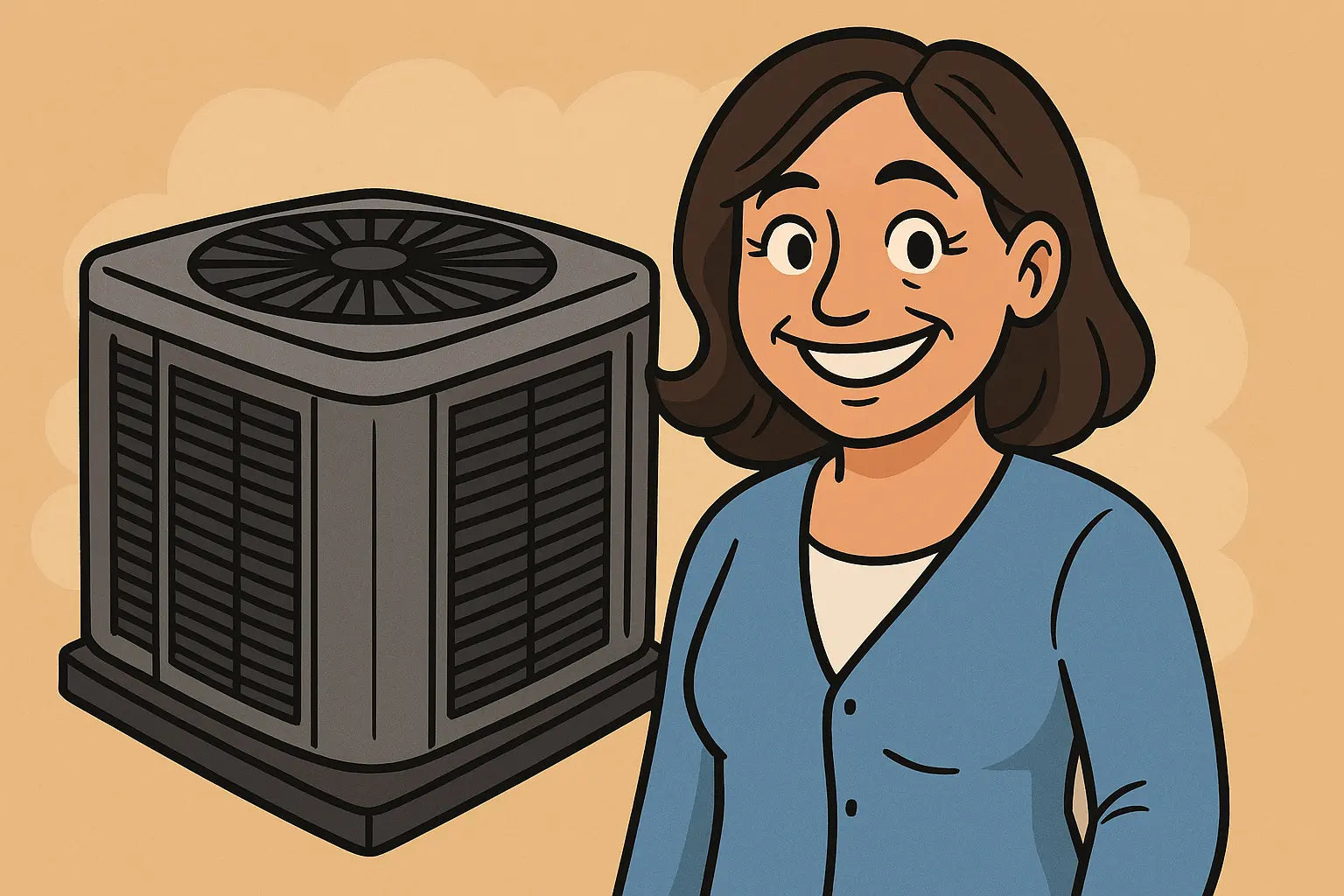Hey there HVAC hero 👋
Samantha here—your no-nonsense guide to all things cool. Literally.
So, you’ve got your hands on the powerful Goodman GLXS4BA3610 condenser and AMST36CU1300 air handler, and now it’s time to get down to one of the most critical steps: evacuating and charging your R-32 refrigerant.
But listen—R-32 isn’t your grandpa’s Freon. This next-gen refrigerant is A2L-rated, meaning it’s mildly flammable and requires precision, patience, and the right tools. You don’t want to wing this step.
Let’s dive into the process like a real pro (or at least with the confidence of one 😎).
Step 1: Know Your Tools and Safety Protocols 🧰
Before you even think about cracking open those service valves:
-
Make sure you’re EPA 608 certified. If you’re not, stop right here and call in a licensed tech.
-
You’ll need:
-
A vacuum pump rated for A2L refrigerants
-
A digital micron gauge
-
R-32-compatible manifold gauges
-
An R-32 recovery cylinder (do not use an R-410A tank)
-
Proper PPE (gloves, goggles, flame-resistant clothing)
-
-
Work in a well-ventilated area. R-32 is heavier than air and can pool at floor level.
Not familiar with R-32 yet? The EPA’s fact sheet on A2L refrigerants is a must-read.
Step 2: Confirm Line Set & System Readiness
Before pulling a vacuum, make sure:
-
Your refrigerant line set is brazed or flared (Goodman prefers brazing for leak prevention).
-
You’ve pressure-tested the system with nitrogen up to 400 psi for 30–60 minutes.
-
The system holds pressure with no drops.
-
Service valves on the condenser are back-seated (closed).
-
The indoor coil's TXV is properly installed and sensing bulb is tight.
If you’re unsure about the pressure test procedure, Energy Star has a solid guide.
Step 3: Evacuate the System (Down to 500 Microns or Bust)
Here’s where it gets real. Pulling a deep vacuum is critical to prevent moisture, air, and non-condensables from ruining your compressor.
Follow this step-by-step:
-
Hook up your vacuum pump to the center port of your R-32-rated manifold.
-
Connect your blue low-pressure hose to the suction service valve and yellow hose to the vacuum pump.
-
Use a core removal tool to take out Schrader valves and ensure full flow.
-
Start the vacuum pump and monitor your digital micron gauge.
-
Pull down to 500 microns or lower, then valve off the pump.
-
Watch for micron level rise (it should stay under 1000 over 10 minutes).
-
If it spikes, you’ve got a leak or moisture—repeat the vacuum.
-
Still learning how to read a micron gauge? HVAC School explains it well in their deep-dive tutorial.
Step 4: Charging the System with R-32 🧯❄️
Now that your system’s bone-dry and leak-free, it’s time to let the refrigerant flow. If your line set is 15 feet or less, you may not need to add refrigerant—Goodman pre-charges the GLXS4BA3610 for that distance.
Anything over 15 feet? You’ll need to calculate and weigh in the additional charge. Here’s how:
R-32 Charge Formula
Add 0.15 oz of R-32 per additional foot of line set (beyond 15 ft).
So for a 25-ft line:
-
25 - 15 = 10 ft extra
-
10 x 0.15 oz = 1.5 oz additional charge
Steps:
-
Place your R-32 tank on a refrigerant scale.
-
Open the liquid service valve slowly (about 1/4 turn).
-
Charge by weight only using the scale—never charge R-32 by pressure.
-
Let the system stabilize for 10–15 minutes before checking readings.
Need help using a scale or unsure how to add refrigerant safely? Check out AC Service Tech’s video guide on charging with R-32 for practical tips.
Step 5: Dial It In—Superheat & Subcooling
After you’ve charged the system, it’s time to fine-tune performance. These readings confirm if the system’s charge level is right and help detect under/overcharging.
-
Subcooling target for the GLXS4BA3610 = 10°F ± 3°F
-
Superheat depends on indoor conditions and metering device (TXV vs piston)
Pro Tip: Use the Goodman charging chart from your unit’s manual for exact numbers, or input your data into this free superheat/subcooling calculator.
Incorrect readings? You may need to:
-
Remove refrigerant (into an approved R-32 recovery tank!)
-
Add more refrigerant incrementally (just a few grams at a time)
-
Check airflow (dirty filter, closed registers, or wrong blower speed)
Step 6: Final Checks and System Startup ✅
Once your refrigerant levels are confirmed:
-
Fully open both service valves
-
Run the system for 15+ minutes
-
Check:
-
Supply/return temp differential (target: 16–22°F)
-
Amperage draw on compressor and fan
-
Blower speed tap settings (adjust for comfort and humidity control)
-
Condensate line flow
-
If you’ve logged everything—pressures, charge added, temp readings—pat yourself on the back, because that’s exactly what pros do. You’re already ahead of the game.
Samantha’s Final Word 💬
Alright HVAC hero, you've officially leveled up. 🔧⚡ Whether you're installing solo or guiding your tech through the process, you've now got the confidence and clarity to handle R-32 like a boss.
Just remember: when you're dealing with refrigerants—especially flammable ones—slow is smooth and smooth is safe. There’s no prize for speed here, but there is one for precision.
Oh—and if you’re still considering the right system for your home, or just want to geek out over specs, head over to this Goodman 3-Ton 14.5 SEER2 R-32 system page at The Furnace Outlet. It’s where all the best upgrades begin.
Trying to avoid installation mistakes? Visit my guide: Avoid These 7 Common Mistakes with the Goodman GLXS4BA3610 + AMST36CU1300.
Stay cool, stay safe, and I’ll catch you on the next install! ❄️
– Samantha, Home Comfort Advisor







